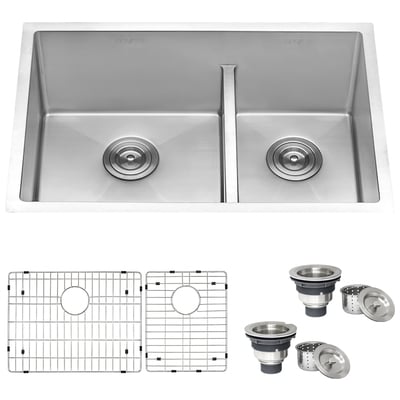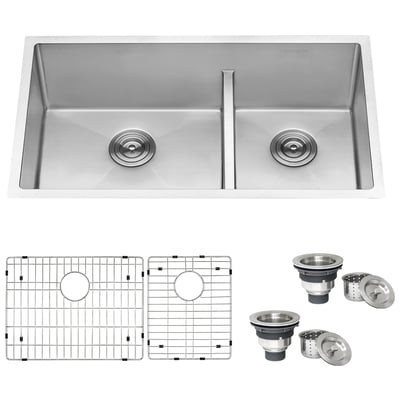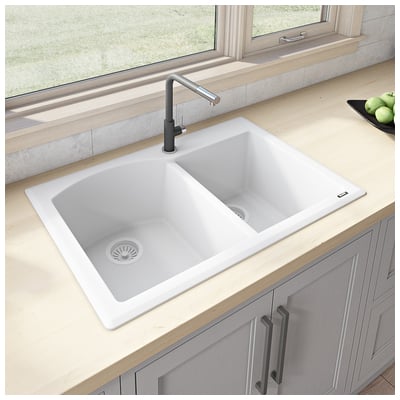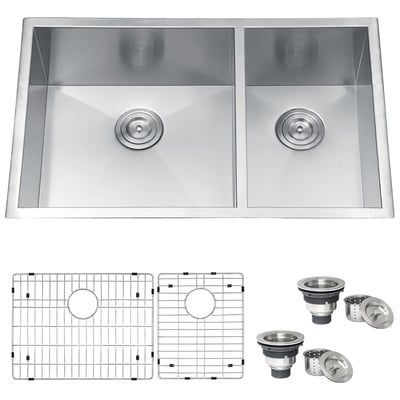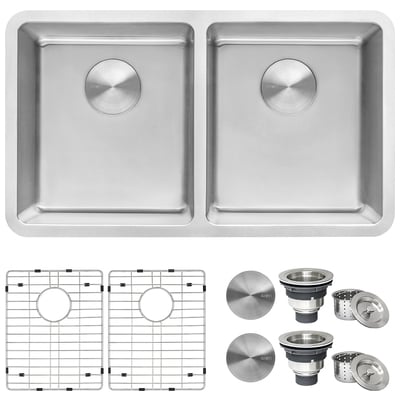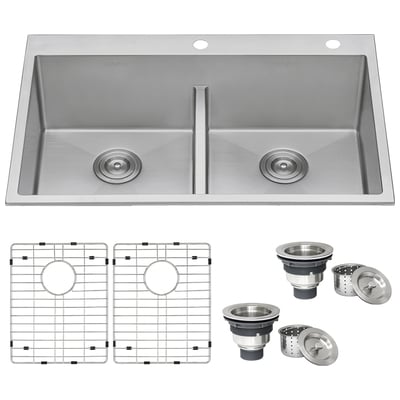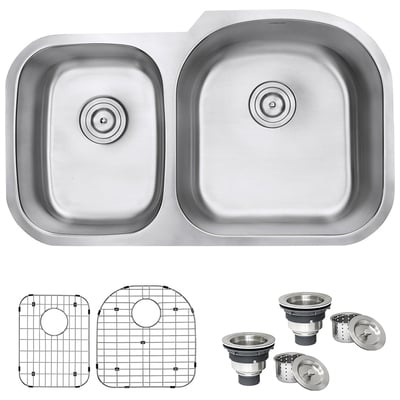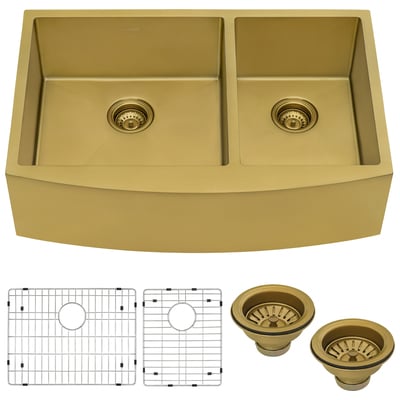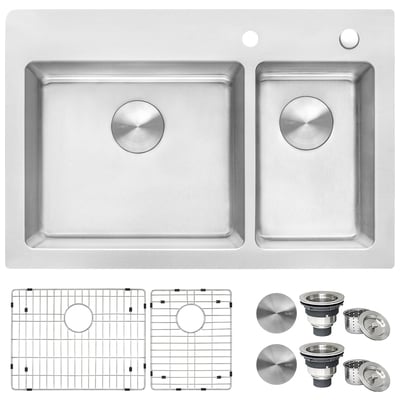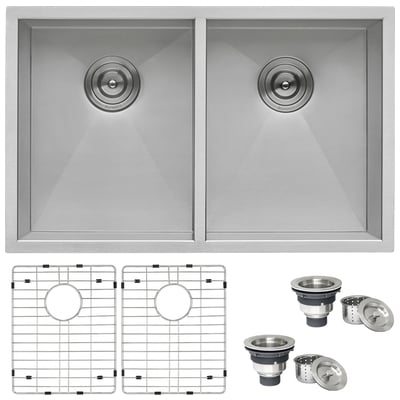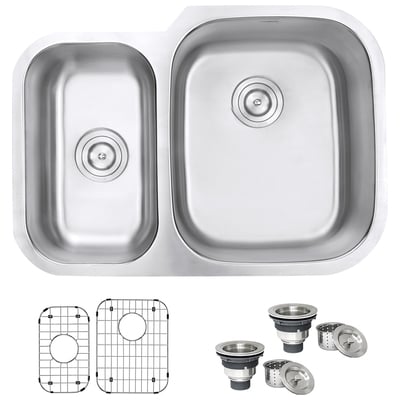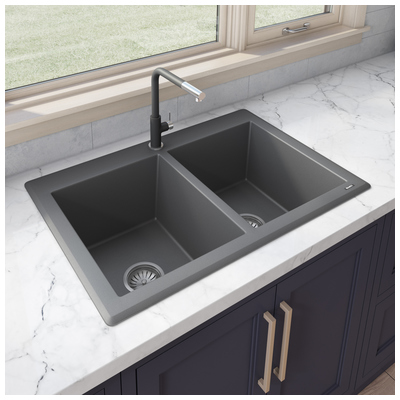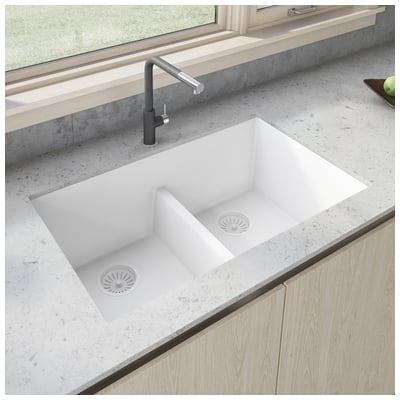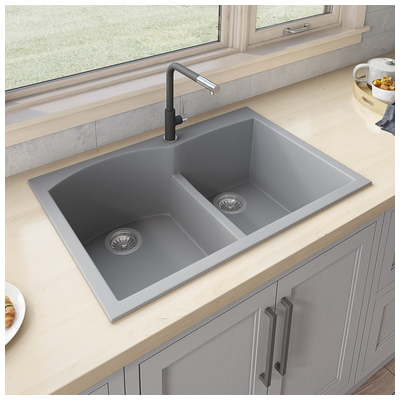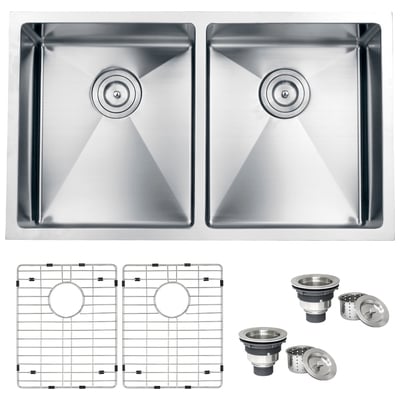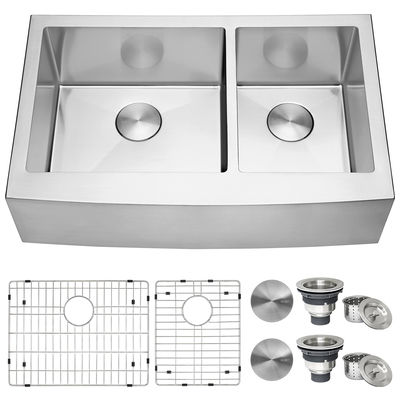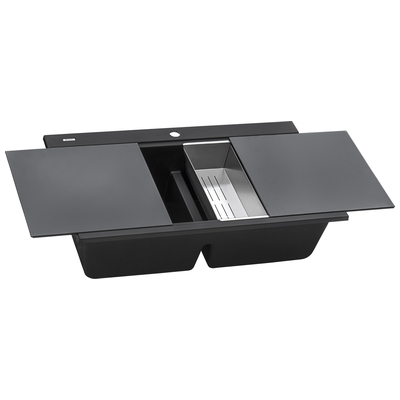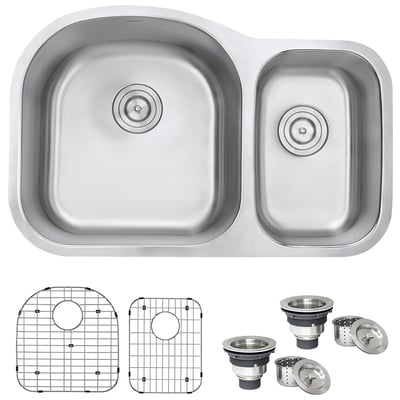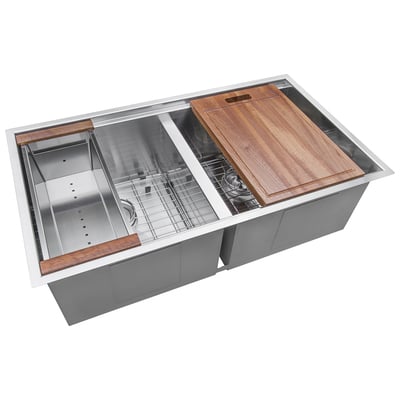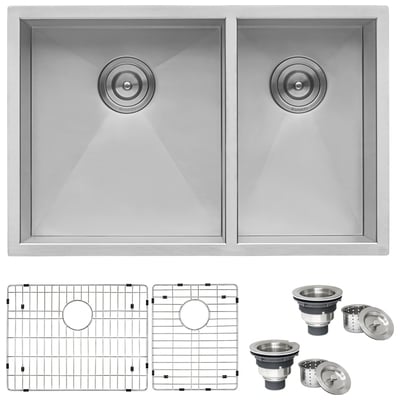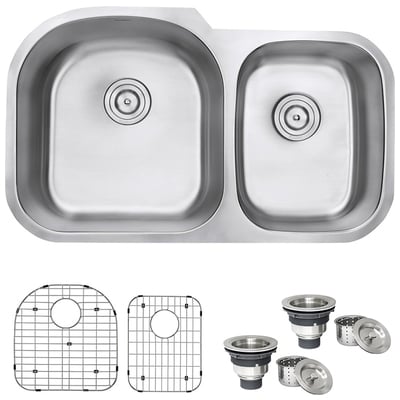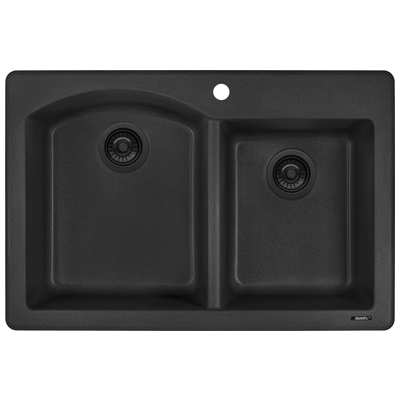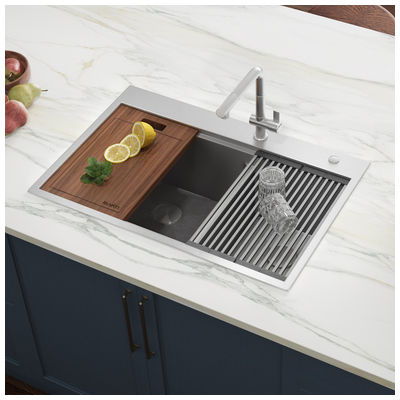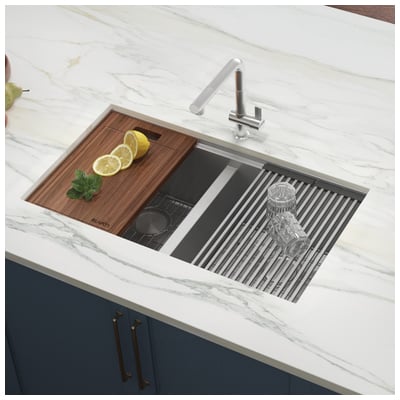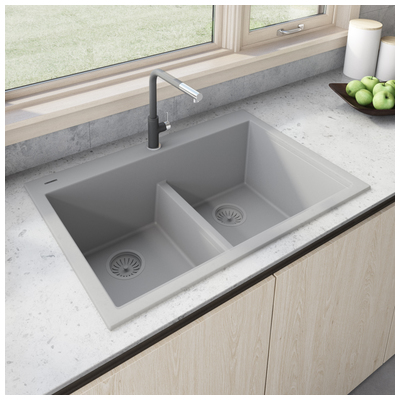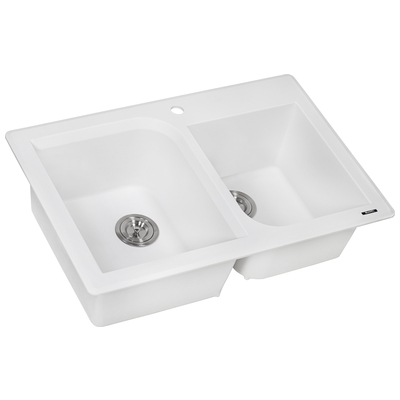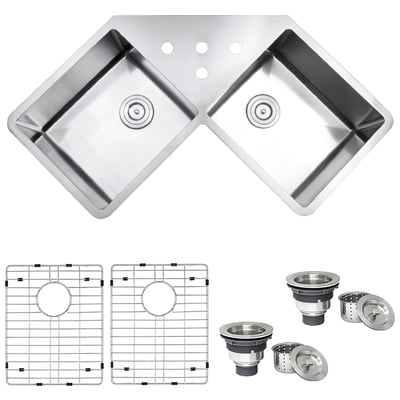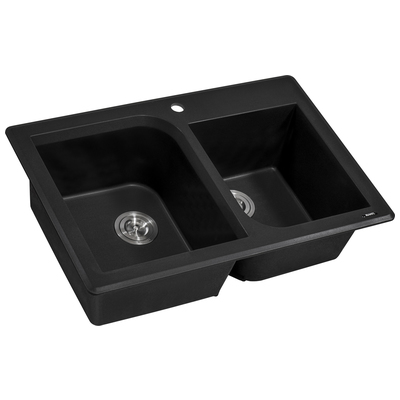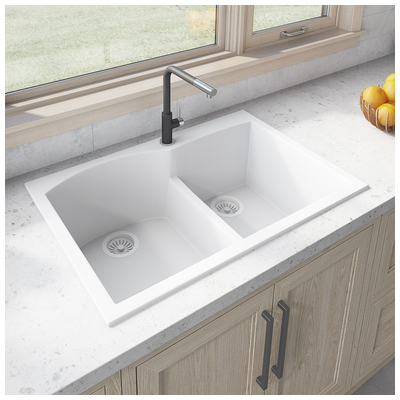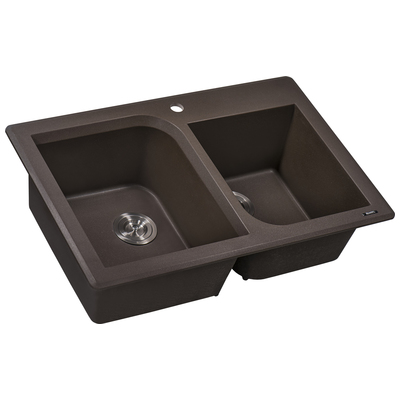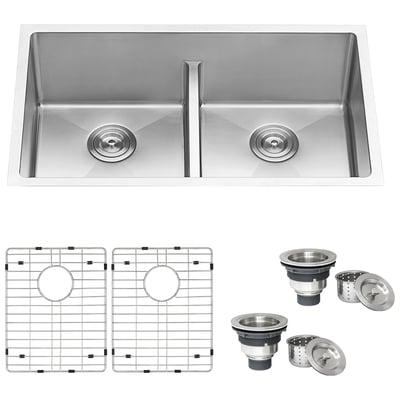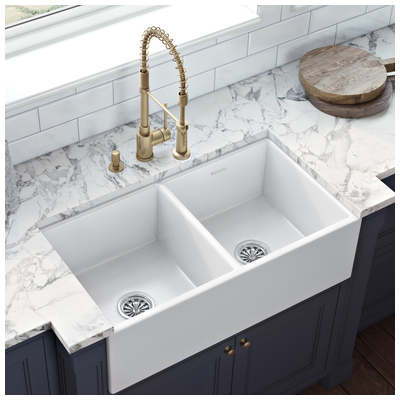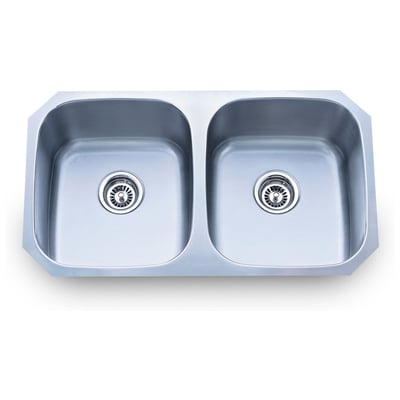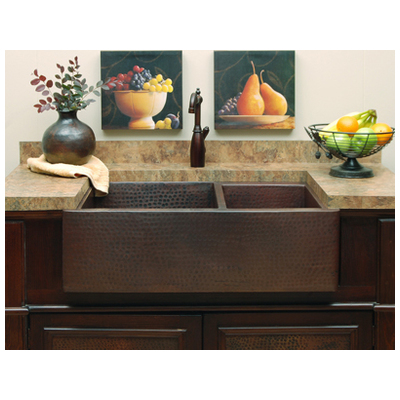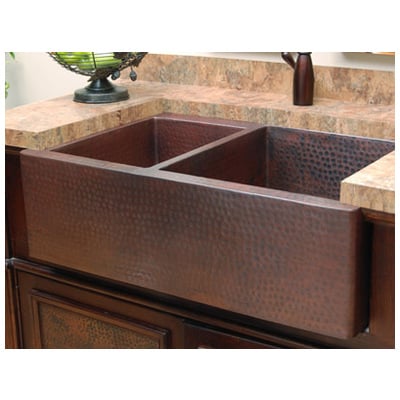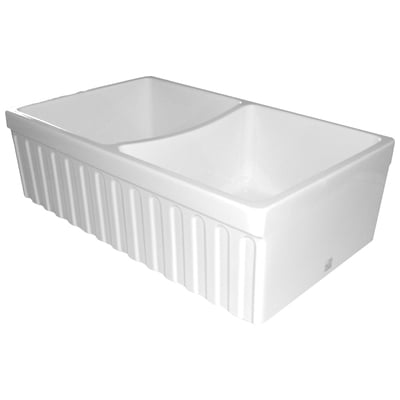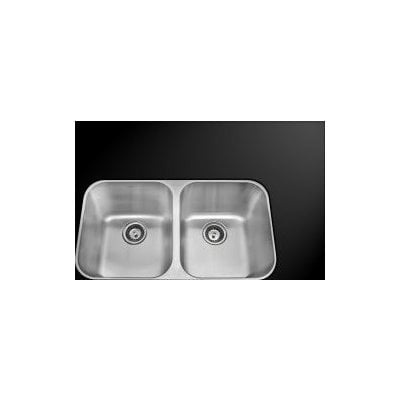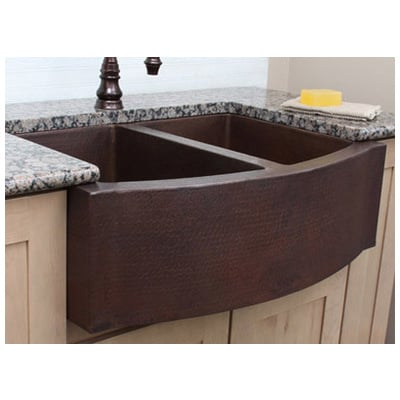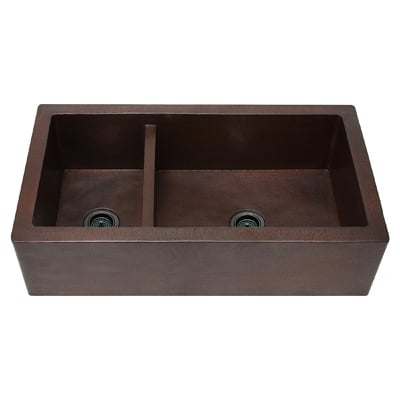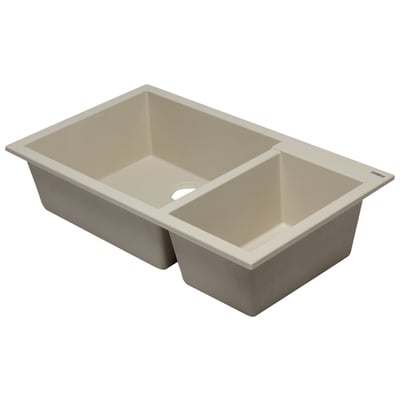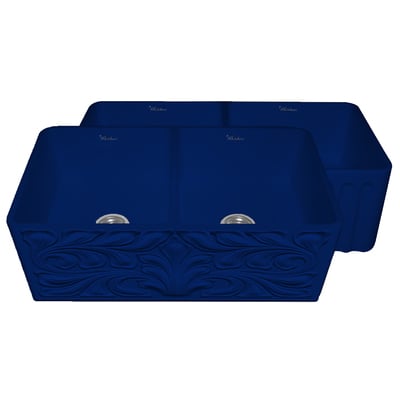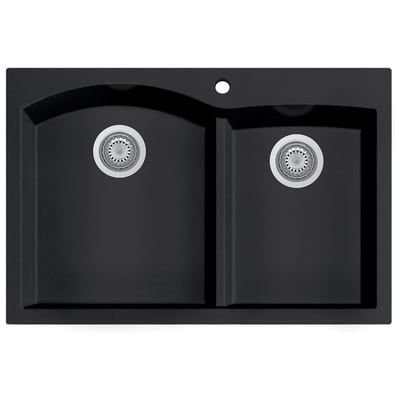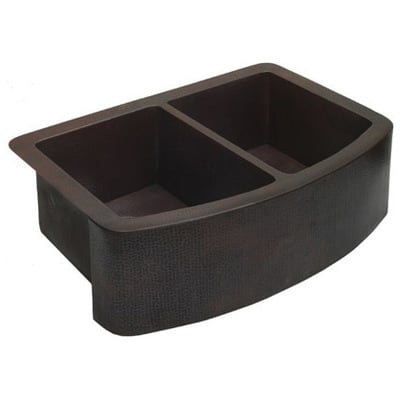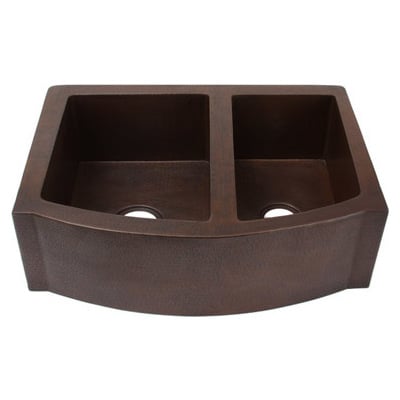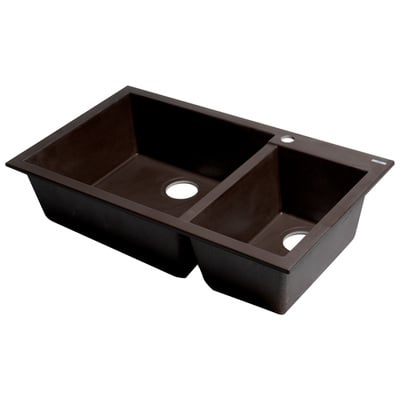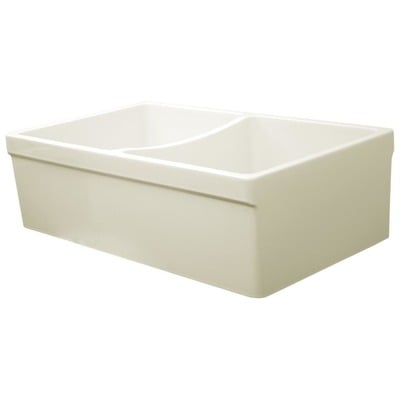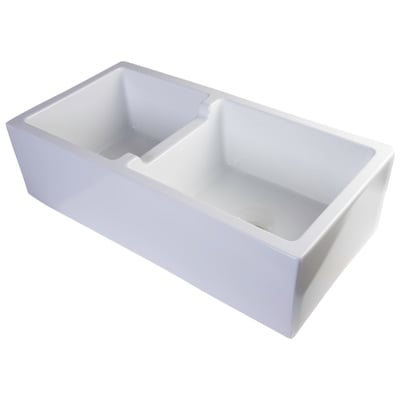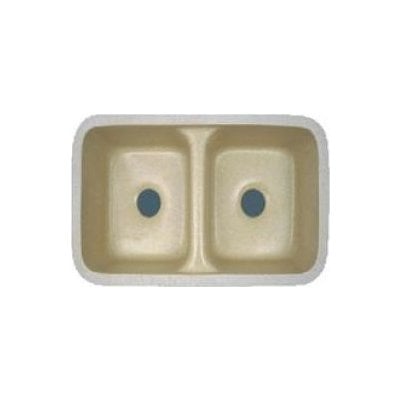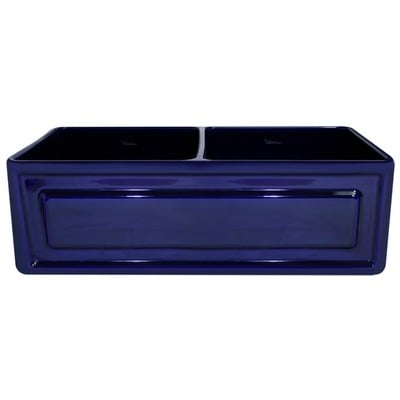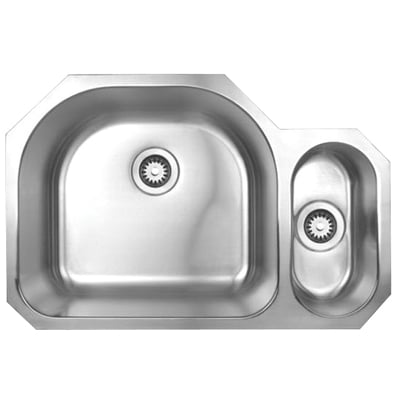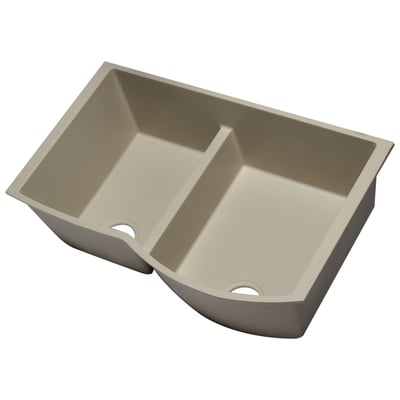If you’re planning on buying a new kitchen sink, chances are you’ve heard of zero radius kitchen sinks. But while most sink lingo is pretty self explanatory (apron sink, undermount sink, double bowl sink, etc.), “zero radius” isn’t quite so obvious. That’s why we’ve compiled this simple guide to getting to know these sleek, chic modern sinks, as well as a few pros and cons for installing them in your own kitchen.
Shop Double Basin Kitchen Sinks Ruvati:
So what are zero radius kitchen sinks? The answer is simpler than you might think: they’re essentially rectangular sinks. Now, most kitchen sinks are rectangular, but zero radius sinks are precisely rectangular, with sharp 90 degree corners and perfectly straight edges, rather than the more conventional gentle curves and sloped sides. The bottom and sides of the sink are perfectly flat, and are more than a little bit reminiscent of restaurant or other commercial sinks.
This is a small difference, but one that has a surprisingly large impact on the overall appearance of the sink. Because most sinks have rounded corners – from traditional apron sinks all the way up through contemporary stainless steel ones – the sharp lines of zero radius kitchen sinks creates a striking modern appearance. The straight, simple lines are perfectly in keeping with a minimalist modern kitchen decor, and tend to give stainless steel sinks in particular a more sophisticated appearance.
In fact, the majority of zero radius kitchen sinks are made of stainless steel. There are a couple reasons from this, but they mostly come down to what materials mesh well with other trends in modern kitchen design. For example, stainless steel appliances are still the go-to choice for a very modern kitchen, and stainless steel apron sink blends with them beautifully. And as I mentioned before, stainless steel zero radius kitchen sinks are strongly inspired by restaurant sinks, which means they’re right at home in increasingly popular professional style kitchens.
That said, not all zero radius kitchen sinks are made of steel. In fact, you can find them in a variety of other trendy materials, like composite stone or even copper. Composite stone sinks are available in a wider variety of colors and are a little quieter than stainless steel sinks, while copper sinks have a rich, antique patina that has a very traditional feel. Both types of sinks produce a slightly warmer look than steel, and work great in a kitchen that’s more contemporary than cutting-edge modern. The alternate material creates a slightly softer, more traditional look, while the zero radius style adds that trendy modern edge.
Zero radius kitchen sinks also have a few practical advantages over your standard kitchen sink. First and foremost, because they’re almost perfectly flat on the bottom, it’s much easier to stack dishes in the sink without the fear of them tipping over. Glasses will sit flat and pots and pans can be filled to the brim to soak. And because the corners of the sink aren’t rounded off, you actually end up with a slightly higher capacity sink in the same amount of space. Maybe most importantly, zero radius kitchen sinks are often paired with neat accessories, too – like sink grids that offer even greater stability and keep the sink from being damaged, or even colanders or cutting boards that sit firmly on the edge of the sink, turning the sink into a usable prep space.
Of course, zero radius kitchen sinks aren’t without their drawbacks, too. The very features that make them so visually stunning and desirable also introduce a few unique difficulties into the design. Most notably, the sharp 90 degree corners on the sides and bottom of the sink can be much more difficult to clean. You’ll need to spray regularly and occasionally scrub the corner-crevices with a brush to keep gunk from accumulating in them. This might not be a significant problem when you first get the sink, but many users report that problems with cleaning become more pronounced as the sink ages, usually after a year or two. And the ultra-flat bottom of zero radius kitchen sinks can also occasionally hinder drainage, meaning you’ll need to spray a little extra water to ensure everything in the sink makes it down the drain. If you don’t mind a little extra cleaning, this shouldn’t be an issue, but it is something to be aware of before you buy.
Shop All Double Basin Kitchen Sinks:



